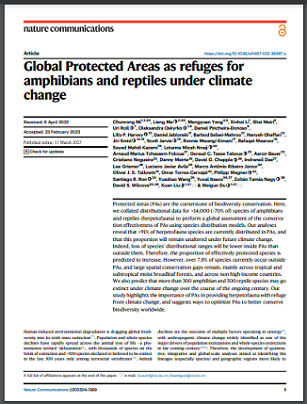
Protected Areas (PAs) are the cornerstone of biodiversity conservation. Here, we collated distributional data for >14,000 (~70% of) species of amphibians and reptiles (herpetofauna) to perform a global assessment of the conservation effectiveness of PAs using species distribution models. Our analyses reveal that >91% of herpetofauna species are currently distributed in PAs, and that this proportion will remain unaltered under future climate change. Indeed, loss of species’ distributional ranges will be lower inside PAs than outside them. Therefore, the proportion of effectively protected species is predicted to increase. However, over 7.8% of species currently occur outside PAs, and large spatial conservation gaps remain, mainly across tropical and subtropical moist broadleaf forests, and across non-high-income countries. We also predict that more than 300 amphibian and 500 reptile species may go extinct under climate change over the course of the ongoing century. Our study highlights the importance of PAs in providing herpetofauna with refuge from climate change, and suggests ways to optimize PAs to better conserve biodiversity worldwide.














